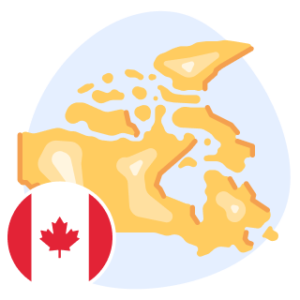Canada has released its Immigration Levels Plan 2023-2025, and plans to continue raising its immigration target at an even higher rate each year. By 2025, Canada will welcome an incredible 500,000 permanent residents to the country in that year alone.
If there’s ever been a time to begin a Canadian education with hopes of a permanent move to Canada, this could be it!

Immigration Levels Plan 2023-2025
On an annual basis, Immigration, Refugees and Citizenship Canada (IRCC) announces an updated Immigration Levels Plan, sharing how many new permanent residents the country plans to accept each year. The most recent Immigration Levels Plan was released in March of this year.
On November 1, 2022, Canadian Immigration Minister Sean Fraser announced the latest plan, including greatly increased target numbers for the next three years:
2023: 465,000 permanent residents
2024: 485,000 permanent residents
2025: 500,000 permanent residents
Considering that Canada accepted around 405,000 new immigrants in 2021, this represents an expected increase of over 23.4% from 2021 to 2025!
Planning to live and work in Canada after finishing your studies? Learn about Canada’s popular Post-Graduation Work Permit.

Canada Needs New Immigrants
Immigration is vitally important to Canada’s growth. From an economic perspective, higher immigration rates help grow Canada’s economy and address the country’s ongoing labour shortage. Immigration also changes lives, reunites families, and provides safety to refugees.
With more opportunity than ever to immigrate to Canada, you may be wondering where to begin. Canada has many different immigration streams, providing many ways to qualify for residency.
Based on where in the country you study, live, and work, here are a few of the most important immigration routes you’ll want to explore. These regional programs are likely to be a major focus for Canada in the next few years:
- The Provincial Nominee Program
- The Atlantic Immigration Program
- The Rural and Northern Immigration Pilot
Express Entry streams are available within each of these programs, and can be the fastest and most reliable way to apply for permanent residency. Those who are studying or working in healthcare, manufacturing, or STEM fields are in especially high demand, so are the most likely to be successful.
Thinking of applying to study in Canada? To start, read our full guide to the Canadian Undergraduate Application Process.

Good News for International Students
So what does this mean for international students? Simply put, Canada wants you here, and is showing that in several ways. Whether you’re already studying in Canada, or just starting to plan your study abroad journey, living and working in Canada after graduating seems more achievable than ever.
In addition to raising immigration level targets so dramatically over the next three years, Canada has also recently:
- Lifted limits on the number of hours per week that international students can work
- Extended distance learning measures for international students
- Announced 18-month extensions for post-graduation work permit holders
Timely measures like these showcase how much Canada values and supports its international students, both during their studies and after graduation.

With Canadians more supportive of immigration than ever before, new immigrants to Canada can find welcoming communities across the country to build a new life in. It’s clear: the future is bright for international students interested in staying in Canada after finishing their studies.



